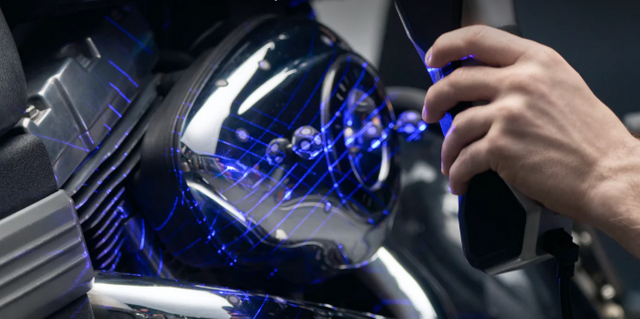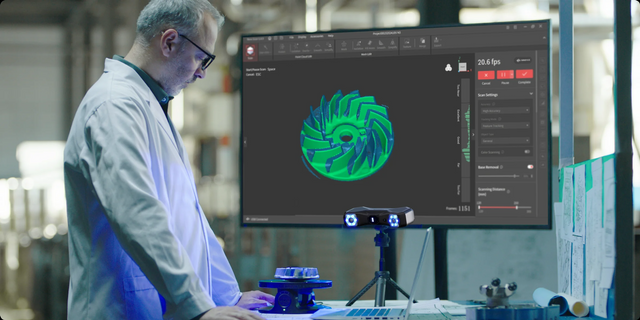What is a Metrology 3D Scanner?
A metrology 3D scanner is a high-precision measurement device used to capture the shape and dimensions of objects, generating digital 3D models. Unlike general-purpose 3D scanners, metrology 3D scanners focus on accuracy and reliability, making them indispensable in fields requiring stringent precision, such as industrial inspection, reverse engineering, quality control, and scientific research.
Working Principle
Metrology 3D scanners often utilize laser scanning technology as their core principle. The device projects a laser beam onto the object’s surface and uses a high-resolution camera to capture the displacement or scattering of the reflected light. This data is then processed to calculate the 3D coordinates of the object’s surface, generating a high-density point cloud. Laser scanning excels at capturing complex shapes and fine surface details. Additionally, it is less sensitive to light interference, making it suitable for a variety of environments, such as industrial workshops or outdoor settings.

https://www.revopoint3d.com/products/3d-laser-scanner-metrox
Features and Advantages
High-Precision Measurement
The measurement accuracy of metrology 3D scanners typically reaches sub-millimeter or even micron levels, enabling the detection of extremely subtle surface variations, which is crucial for inspecting industrial components.Non-Contact Measurement
Non-contact scanning avoids the potential damage that traditional contact-based tools might cause to objects, making it ideal for measuring delicate, soft, or precision items.Efficient Data Collection
Laser scanning can rapidly capture large areas of 3D data, making it especially effective for inspecting complex parts or performing quick quality checks in mass production.Broad Applicability
Laser technology supports measurements of various materials, including metals, plastics, and composites. It is also capable of scanning dynamic objects, such as monitoring deformation during motion.
Applications
- Quality Inspection: Scanning data is compared against design specifications to identify errors and ensure compliance with standards.

- Reverse Engineering: Capturing the geometric information of existing products for design optimization or replication.
- Mold Manufacturing: Scanning prototype parts to quickly generate 3D models for refining mold design processes.
- Scientific Research: From medical imaging to geological exploration, metrology 3D scanners provide high-precision digital support.
With its precision and efficiency, the metrology 3D scanner is revolutionizing measurement solutions across industrial and scientific fields.